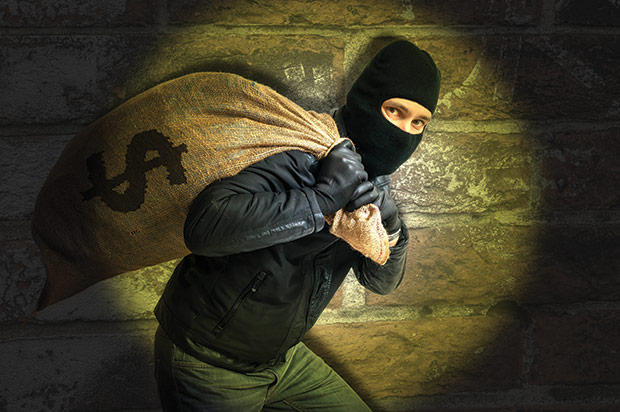The witness outline: Success is borne by preparation
By: DOLAN MEDIA NEWSWIRES//May 10, 2016//
By F. Dennis Saylor IV and Daniel I. Small
Dolan Media Newswires
When it comes to organizing for trial and questioning witnesses, there is no “one size fits all” way to do it. Nevertheless, there are good reasons for and against taking different tacks.
It’s commonly accepted that using no notes is a bad idea. Rather than writing a full-on script listing verbatim everything you might say it at trial, it’s often better to rely on a well-researched, bullet-point-style outline.
Why not a script? It is, in many respects, an attractive option. Certainly it is the safest one. For some lawyers, particularly early in their careers, or if they don’t try cases regularly, it may be a helpful and workable one.
However, it comes with some inherent dangers that must be recognized.
For one, there is a powerful magnetic attraction between your eye and the written word. It’s unavoidable. The more you have written down, the more you will look down and read. The more you look down, the less you pay attention to what’s important, including:
• The witness — Keeping eye contact, assessing how he is doing, and listening for the odd words or facts that can make a huge difference in your case.
• The jury — Developing a relationship, judging how its members are responding.
• The judge — Who might be giving you telltale signals that you’re venturing in the wrong direction, or going on too long.
• Both benches — Maybe opposing counsel is not a good enough poker player to hide when one of your points has hit its target. Maybe your bench is trying to tell you something (e.g., did you forget to offer that last exhibit?).
Then there’s the matter of voice. Actors and actresses spend a lifetime learning how to read a script and sound natural. You haven’t. You have a different voice for reading, and most people can tell and don’t like it. They want you to talk with them, not read at them, even if that means you stumble occasionally. That only makes you more human.
Also to be considered is length. We’re lawyers, and therefore we write too much.
If your questions are so long that you need to write them out, they’re too long. And if you’ve written out seven really good questions on a point, but in court your witness does a good job covering the issue in just three, will you have the will power to skip the other four?
The good news is that there is a middle ground between no notes and a script. It’s a simple bullet-point-style outline. Properly done, it’s more of a checklist than an outline.
The goal is to give you both inspiration and guidance. Whether you’re staring down a witness across the deposition table, reading an exhibit, or watching a jury’s responses, you can easily return to your checklist, see where you are, and know where to go from there. To be effective, it must be thorough, easy to use and well organized.
The witness outline should be in a three-ring binder, with no more than a single subject matter being dealt with on each page. The text should always be in large type, with generous spacing, so you can glance at it and find your place.
Draw a line two-thirds of the way over on the right-hand side and a line toward the bottom. On the left-hand side of the page are the notes for questions, indicated in short bullets. There should be no full sentences, no question marks, and nothing that is more than three words long. These are simply topics. You are making a checklist of the things to ask that witness.
The only exceptions to this general rule are quotations from a statement or a document, questions that are foundational (e.g., “Is this being kept in the ordinary course of business?”), or hypothetical situations presented to an expert witness.
The right-hand side of the witness outline is for your notations — which can consist of anything that backs up the questions you are asking. Every reference and any exhibit or citation that relates to a question you intend to ask should be noted on the right side of the witness outline (e.g., references to depositions or other transcripts, with page and line numbers, exhibit and/or Bates numbers, and more).
The other thing to put on the right side of the line is a few notes to yourself. You should include information that will help you during the trial or deposition. Next to exhibit references, write “Offer.” If you tend to talk too fast, write “slow down.”
If you wander around too much, write “stand still.” These are your notes. They are for your eyes only.
This system can be used no matter if you are dealing with a small case with only one witness, or a large, complex case with dozens of witnesses. Every notebook is an independent, complete and separate item. While the size and number of notebooks will change, the basic idea stays the same.
While this system has been used by lawyers for many years, there is no reason to dogmatically insist on adherence to it. What is most important is that you develop your own system that you feel comfortable with, and then use it in a disciplined way.
Consistency is essential. Every time you open up the notebook, what you see on the page is comforting and familiar to you. Every time you open the witness notebook, no matter what the situation, no matter how frazzled you are, you can have confidence that you are prepared, and what you are looking for is “in there.”
Judge F. Dennis Saylor IV sits on the U.S. District Court in Boston. Before his appointment to the bench, he was a federal prosecutor and an attorney in private practice. Daniel I. Small is a partner in the Boston and Miami offices of Holland & Knight. He is a former federal prosecutor and teaches CLE programs across the country.
Legal News
- Former law enforcement praise state’s response brief in Steven Avery case
- Eric Toney announces re-election bid for Fond du Lac County District Attorney
- Former Wisconsin Democratic Rep. Peter Barca announces new bid for Congress
- Republicans file lawsuit challenging Evers’s partial vetoes to literacy bill
- More human remains believed those of missing woman wash up on Milwaukee Co. beach
- Vice President Harris returning to Wisconsin for third visit this year
- Wisconsin joins Feds, dozens of states to hold airlines accountable for bad behavior
- Trump ahead of Biden in new Marquette poll
- Bankruptcy court approves Milwaukee Marriott Downtown ‘business as usual’ motion
- New Crime Gun Intelligence Center to launch in Chicago
- Arrest warrant proposed for Minocqua Brewing owner who filed Lawsuit against Town of Minocqua
- Wisconsin Supreme Court justices question how much power Legislature should have
WLJ People
- Power 30 Personal Injury Attorneys – Russell Nicolet
- Power 30 Personal Injury Attorneys – Benjamin Nicolet
- Power 30 Personal Injury Attorneys – Dustin T. Woehl
- Power 30 Personal Injury Attorneys – Katherine Metzger
- Power 30 Personal Injury Attorneys – Joseph Ryan
- Power 30 Personal Injury Attorneys – James M. Ryan
- Power 30 Personal Injury Attorneys – Dana Wachs
- Power 30 Personal Injury Attorneys – Mark L. Thomsen
- Power 30 Personal Injury Attorneys – Matthew Lein
- Power 30 Personal Injury Attorneys – Jeffrey A. Pitman
- Power 30 Personal Injury Attorneys – William Pemberton
- Power 30 Personal Injury Attorneys – Howard S. Sicula










